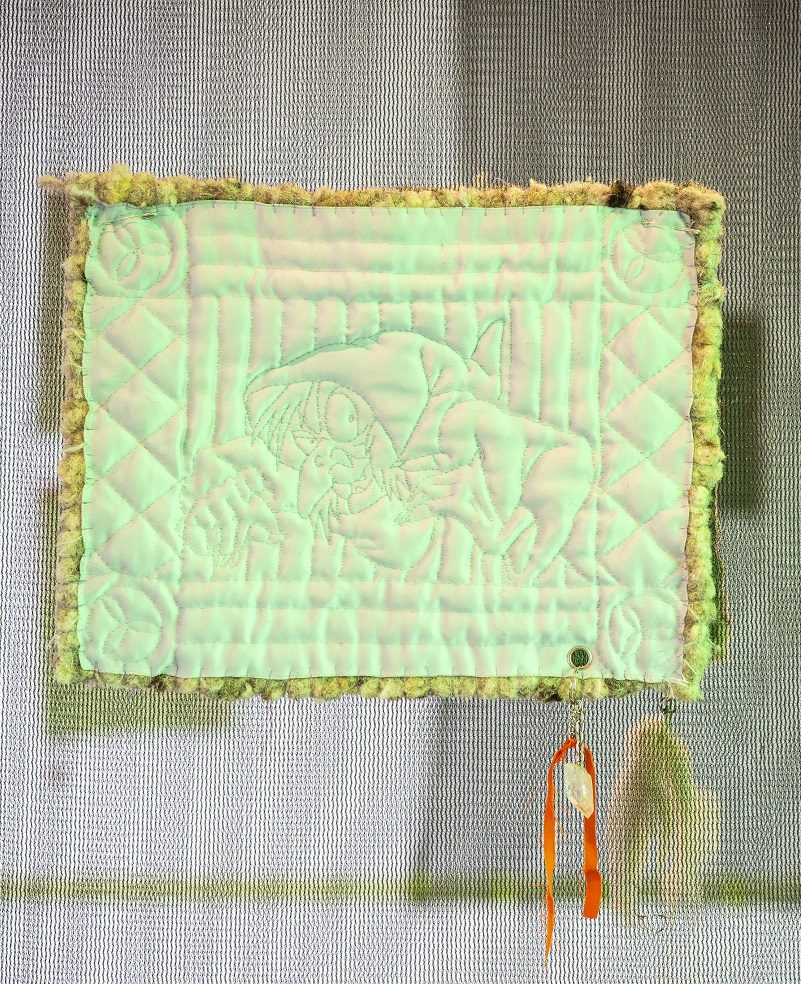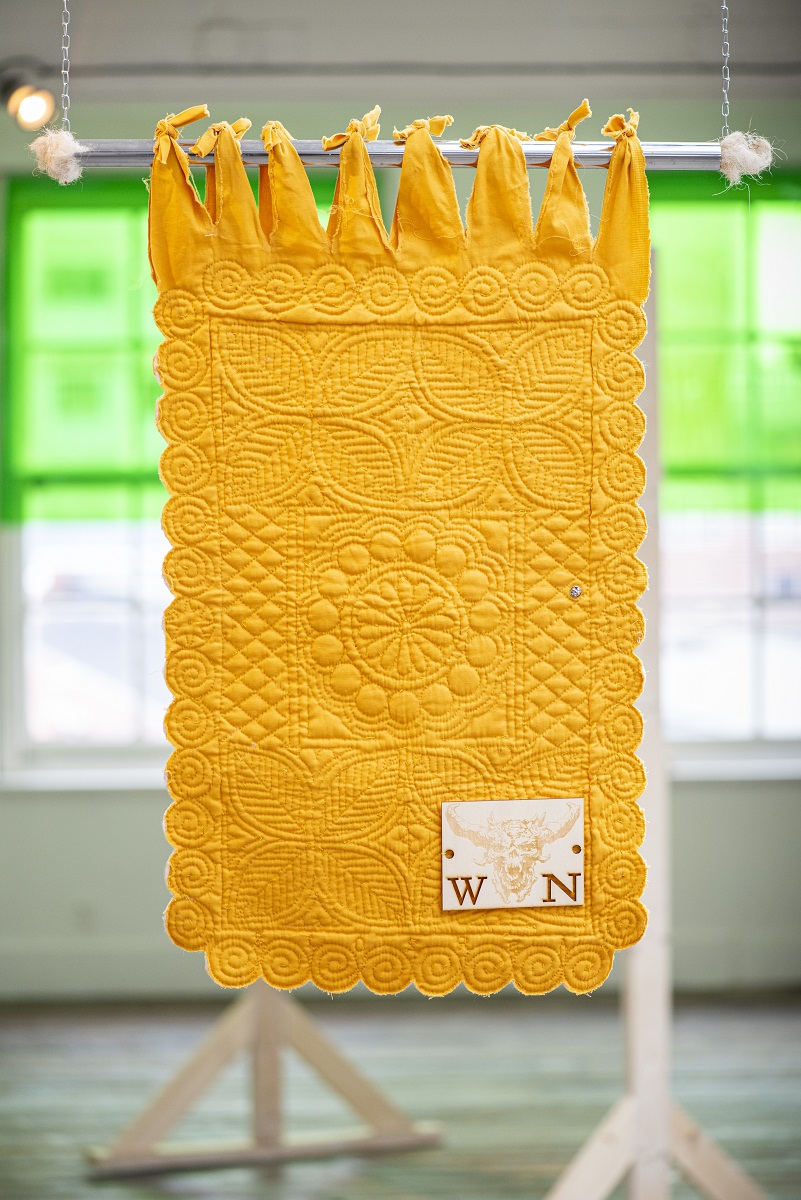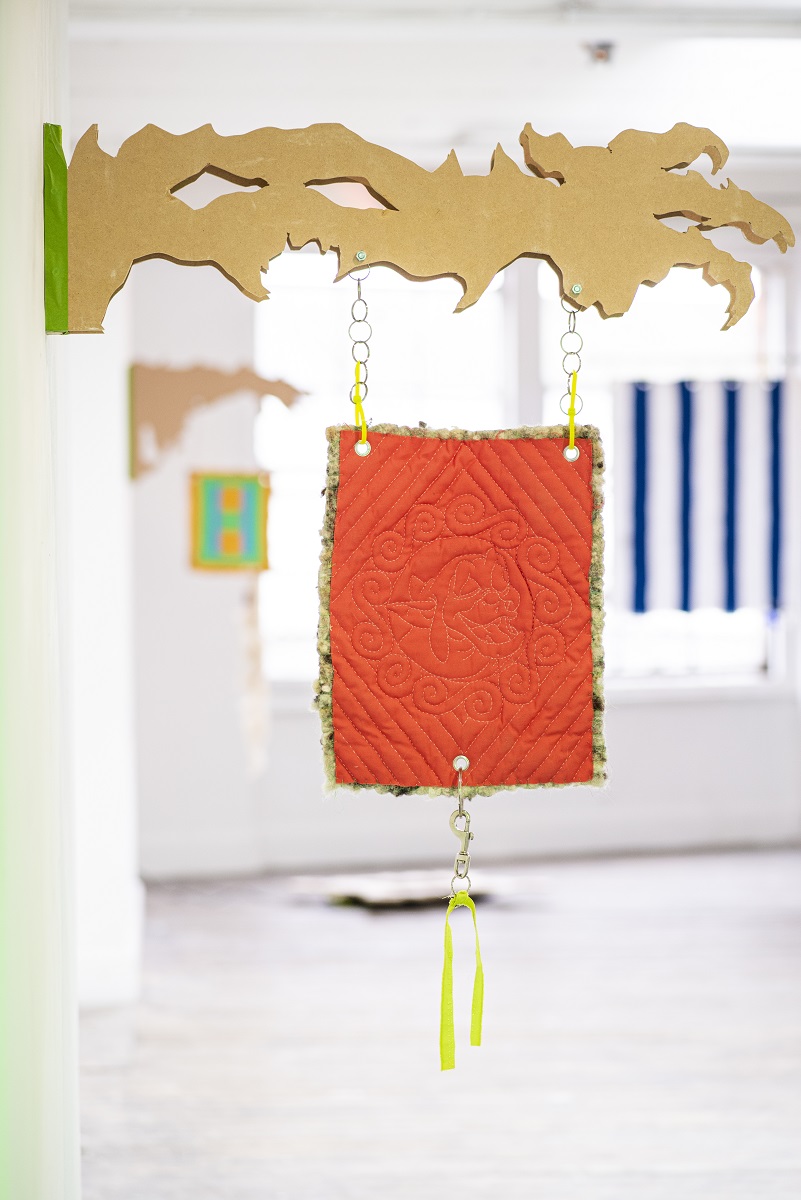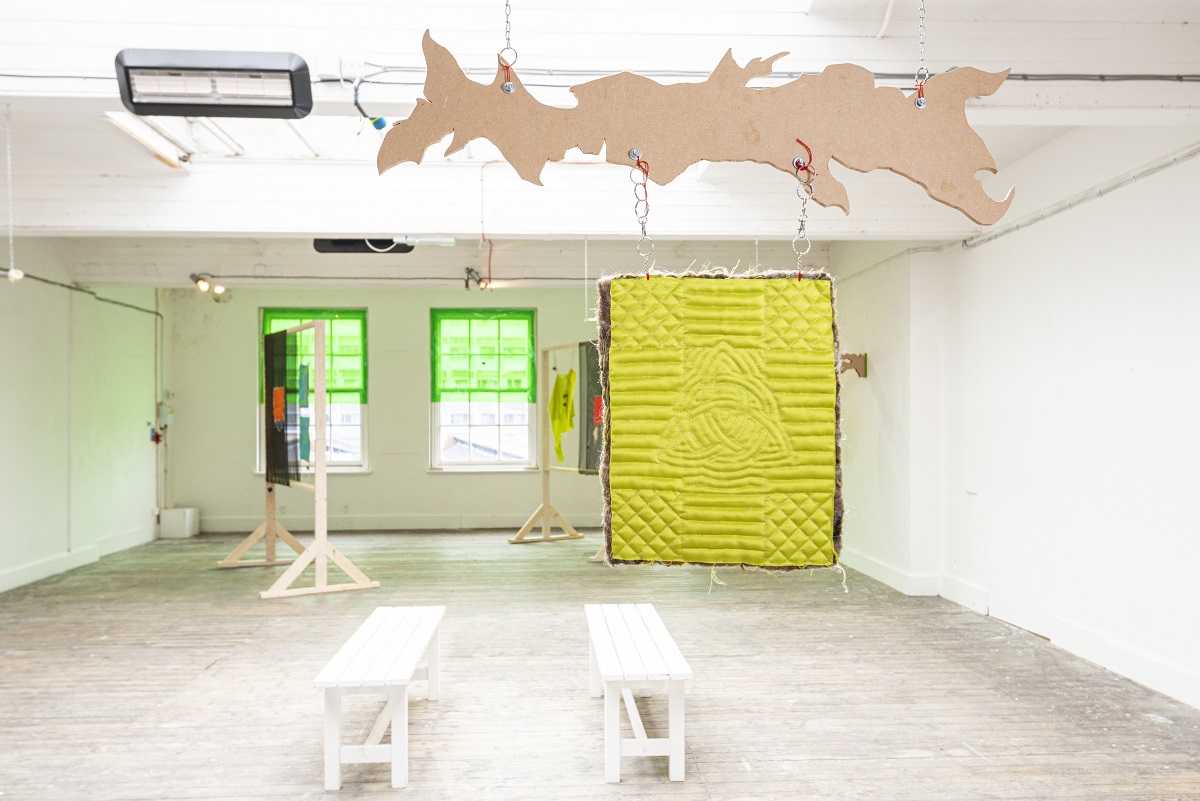Traditional textile craft and Disney culture collide to reveal how national folklore is appropriated and rewritten
“Rise the devil’s servants. Capture them and throw them in the cauldron. Don’t leave anyone behind. The cauldron wants more bodies. I swear this to the death.” This declaration from the villainous Horned King from Disney’s The Black Cauldron (1985) introduces the wall text for Cauldron Born, and primes us for an exhibition centred on folklore, where fantastical Disney characters interweave with symbols from Welsh social history.
Cauldron Born: How Long I Have Thirsted to be a God Among Men is a solo exhibition of textile and installation by Welsh artist Amelia Seren Roberts, which features intricate hand-embroidered Welsh quilting. It includes a ‘strippy’ quilt constructed from strips of material, and throughout the show, works feature familiar decorative symbolism from the Welsh tradition, like snail-shaped forms and swirly S’s representing infinity. Among Roberts’s textiles hangs a traditional embroidery produced by the artist’s mother to portray their family history – an object of personal significance not conceived for public display – and a reminder of the medium’s power for storytelling and remembering.

But this tradition is disrupted by imagery borrowed from the 1985 Disney feature film The Black Cauldron, whose characters include the Horned King, his comic goblin ally and three grotesque witches, all of which become the focus of the textile works, even when framed by more traditional border motifs.The film about a curse was, it seemed, itself cursed. Now largely forgotten, at the time it was the most expensive animated film ever made, nearly bankrupting Disney. The film was adapted from fantasy books, The Chronicles of Prydain, by American author Lloyd Alexander, which are loosely inspired by Welsh folklore. Through these numerous layers of interpretation, the Disney characters are far removed from their origins –the evil Horned King, for instance, was based on the evil sorcerer Arawn in Alexander’s books, yet Arawn was inspired by the fair ruler of the ‘Otherworld’ in Welsh medieval literature. Roberts explores the dangers and complexities of retelling culturally significant stories with artistic licence, be it through craft, literature, or animation.

Challenging the conventional museum display of embroidery, the embroideries are mounted on supports to reveal the imperfections of their undersides. These supports are understated timber frames, unpainted jigsaw-cut MDF boards and lengths of chain that tether the delicate textiles to the more solid structures. Yet fantastical forms subtly find their way into the installation: an MDF tendril grows from the gallery wall, resembling the thorns that encroach on Sleeping Beauty’s castle in Disney’s 1959 film. Green gels on the windows add an eerie light to the gallery space. Every fifteen minutes, an audio clip of a sinister monologue by the Horned King loudly disturbs the quiet gallery. The result is an exhibition where playful interventions allude to a mysterious ‘somewhere else’.

Roberts flattens hierarchies of objects throughout the exhibition: laboriously crafted textiles mix with family-film references, and the installation is adorned with gift shop tat such as decorative pins and cheap dragon keyrings twined with sheep’s’ wool. Through these conflicting symbols, the artist presents a Wales that is constantly being interpreted, represented (or misrepresented) and in some instances, erased. Sewn on the reverse of one of the embroideries is a ‘Welsh Not’ – a wooden plaque inscribed with the letters ‘W. N.’ Such objects originate from the laws by Henry VIII attempting to supress the Welsh language. Worn around the neck of the offender, the plaque identified school children who were believed to have spoken in the Welsh language, rather than English, resulting in an end-of-day flogging.
At the heart of Cauldron Born is the question, how can we retell stories of cultural significance for new generations, without erasing meanings? It addresses the fragile balance that the artist navigates, between retelling stories in a way that is relevant and refreshing, while being respectful of heritage and continuing a family legacy. The result is a bold, playful and perceptive exhibition.
Cauldron Born: How Long I Have Thirsted to be a God Among Men is at Surface Gallery, Nottingham until 10 July
This article is part of Remark, a new platform for art writing in the East Midlands by ArtReview in collaboration with BACKLIT. Read more here and sign up for the Remark newsletter here
